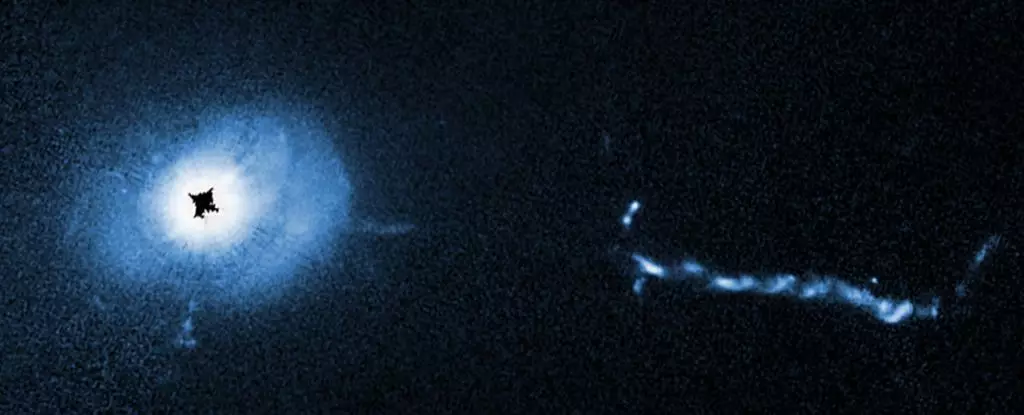Quasars, or quasi-stellar objects, represent some of the most extraordinary phenomena in the universe, standing out not only for their brightness but also for the mysteries they embody. Among these celestial beacons lies 3C 273, an object that has recently received focused attention from astronomers, particularly due to its proximity of approximately 2.5 billion light-years from Earth. Unlike many other cosmic entities that fade away, quasars maintain a presence due to their relentless energy output, mainly powered by supermassive black holes residing at the centers of their host galaxies. This article explores the groundbreaking observations made by the Hubble Space Telescope, highlighting how these insights enhance our understanding of quasars and their complex structures.
The latest observations revealed a wealth of information about 3C 273, magnifying features that had eluded astronomers in the past. By employing the Space Telescope Imaging Spectrograph (STIS), astronomers devised a method akin to creating a coronagraph. This technique minimizes the glare emanating from the central light source, allowing the intricate structures surrounding the quasar to emerge vividly. Such an approach permits researchers to discern details that hint at the behaviors and characteristics of this fascinating celestial object, unlocking a newfound potential for studying similar astronomical phenomena. Bin Ren of the Côte d’Azur Observatory articulated the significance of these observations, asserting that they form a cornerstone for future quasar research.
The Mechanics of Quasar Luminosity
What propels the dazzling luminosity of quasars, such as 3C 273, to astounding heights? Most of this illumination stems from an accretion disk surrounding the supermassive black hole at its core. As gas and dust spiral inward, they undergo extreme gravitational forces and friction, generating immense heat. This results in brilliant radiation observable across various wavelengths, providing a glimpse into the tumultuous environment surrounding black holes. However, until now, comprehending the specific structures and interactions in the vicinity of these quasars has been challenging, primarily due to their vast distances and overwhelming brightness.
3C 273, while not the closest quasar, ranks among the brightest quasars visible to observers from Earth. Its light is astonishingly equivalent to trillions of suns condensed into a compact focal point. The recent Hubble observations have resolved structures previously hidden and provided fresh insights into potential companion galaxies and filamentary structures within the quasar’s influence. Notably, the discovery of these structures within a radius of 16,000 light-years from 3C 273 raises critical questions about interactions between quasars and their surroundings, driving the field of observational astrophysics forward.
One of the most captivating findings involves the astrophysical jets emitted from the quasar, extending an astonishing 300,000 light-years into the vast intergalactic void. These jets, driven by the black hole’s magnetic fields, showcase a complex motion pattern, displaying increasing velocity with distance from the black hole. The mechanics behind these jets, pivotal to our understanding of relativistic astrophysical phenomena, remain an area of active research. Understanding how energy and matter interact in such extreme conditions could have profound implications for astrophysics.
The revelations from Hubble’s observations mark a crucial turning point in our understanding of quasars. The improved resolution and detail afford researchers a clearer perspective, bridging previous gaps between small-scale radio interferometry and large-scale optical imaging. This meticulous analysis pushes the boundaries of what we know about quasar host morphology and their role within the cosmic landscape. Though there is much to unfold from these findings, the insights gleaned thus far enable astronomers to pose new questions and devise innovative methods to explore the universe’s deepest secrets.
In essence, the ongoing explorations of objects like 3C 273 form an essential chapter in the narrative of our cosmic understanding. As we delve deeper into the mechanisms driving quasars, the potential for groundbreaking discoveries continues to expand. Ren’s comments on the limitations of previous observations underscore the transformative impact of technologies like the Hubble Space Telescope, which, akin to a beacon in the dark, illuminates paths ahead in our quest to unravel the complex interplay of matter and energy in the universe. The age of quasar research is dawning, and with it, the promise of greater clarity about one of the universe’s most enigmatic and luminous phenomena.

